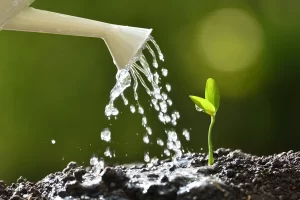Access to clean and safe water is a fundamental necessity for life, yet millions of people in developing and remote regions around the world still face challenges in securing reliable sources of potable water.
In these areas, traditional methods of water treatment often fall short due to high operational costs, environmental impacts, or inefficiencies in handling a broad range of contaminants.
Chlorine Dioxide (ClO₂) technology offers a sustainable, cost-effective, and environmentally friendly solution to these challenges, making it an ideal choice for water disinfection in developing regions.
The Challenges of Water Treatment in Remote Areas
 Water treatment in developing and remote regions is often complicated by inconsistent water quality and lack of infrastructure. In many cases, water sources such as rivers, lakes, and boreholes are contaminated with a wide variety of harmful microorganisms, such as bacteria, viruses, and parasites like Giardia and Cryptosporidium. Additionally, natural minerals like iron and manganese, as well as algae, are common contaminants that pose significant risks to human health.
Water treatment in developing and remote regions is often complicated by inconsistent water quality and lack of infrastructure. In many cases, water sources such as rivers, lakes, and boreholes are contaminated with a wide variety of harmful microorganisms, such as bacteria, viruses, and parasites like Giardia and Cryptosporidium. Additionally, natural minerals like iron and manganese, as well as algae, are common contaminants that pose significant risks to human health.
Traditional chlorine-based disinfection methods are frequently used, but they come with several drawbacks, including the formation of harmful by-products such as trihalomethanes (THMs) and chlorates. These by-products not only have potential health risks but also affect the taste and smell of water, making it less palatable for consumption.
Chlorine Dioxide: A Safer, More Efficient Alternative
Chlorine Dioxide technology stands out as a safer, more efficient alternative to traditional water treatment methods. Unlike chlorine, ClO₂ does not produce harmful by-products when it reacts with organic matter. This makes it ideal for developing regions where water sources are often heavily polluted with organic contaminants.
ClO₂ has a unique ability to inactivate a broad spectrum of pathogens, including bacteria, viruses, protozoa, and fungi, while also addressing issues like biofilm formation in water distribution systems. Its oxidising power is highly effective, even in small concentrations, meaning that less chemical is needed to achieve safe and clean water, lowering overall operational costs.
Additionally, ClO₂ remains stable in water over long distances, ensuring that water remains disinfected and safe to drink, even as it travels through extensive and often ageing infrastructure. This resilience is particularly important in rural areas, where water often has to travel from centralised treatment facilities to remote communities.
Cost-Effective and Environmentally Friendly
Chlorine Dioxide is not only effective but also cost-efficient. The technology can be deployed using simple, scalable systems that are adaptable to a wide range of needs, from large-scale urban water supplies to small rural communities. Systems such as portable dosing units can be powered by solar, wind, or even bicycle-generated energy, making them highly versatile in areas with limited access to power infrastructure.
Environmentally, ClO₂ is a cleaner option compared to traditional chlorine treatments. Its rapid degradation into harmless by-products, such as salt and water, ensures that it leaves no long-term environmental footprint, aligning well with the goals of sustainable development. This makes it an appealing option for regions aiming to improve water quality without compromising ecological integrity.
Improving Health and Productivity
Access to clean water plays a crucial role in improving the overall health and well-being of populations in developing regions. Waterborne diseases, such as cholera, typhoid, and dysentery, can devastate communities, particularly where healthcare resources are limited. By providing a robust, sustainable solution to water disinfection, Chlorine Dioxide technology helps to reduce the prevalence of these diseases, ensuring healthier populations and more productive societies.
In developing and remote regions, where access to safe drinking water remains a challenge, Chlorine Dioxide technology offers a powerful and sustainable solution. Its ability to treat a wide spectrum of contaminants, combined with its cost-efficiency and environmental friendliness, makes it an ideal choice for water treatment in these areas. As the world continues to address the global water crisis, innovative solutions like ClO₂ will play an increasingly important role in safeguarding public health and supporting sustainable development.
For more information on how Scotmas can provide tailored water treatment solutions for your community, contact us today.






